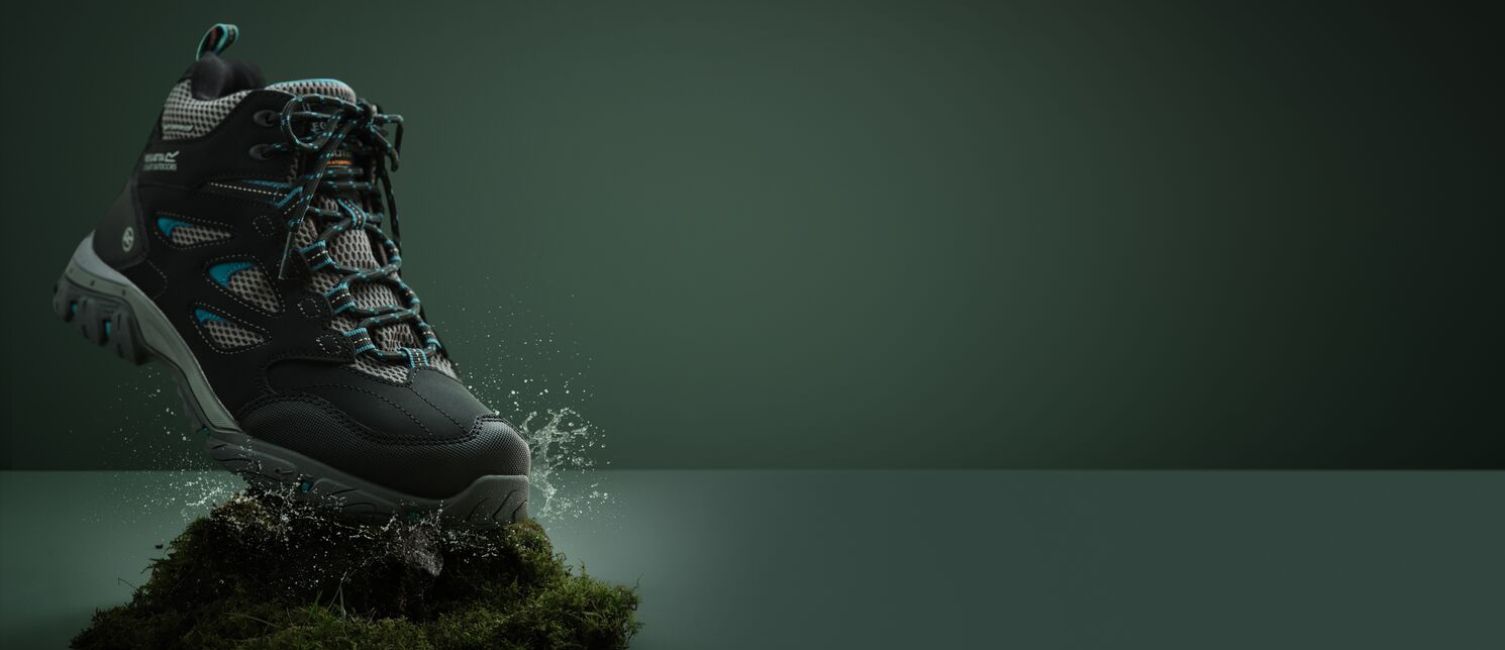Want to understand your walking footwear on a technical level? Discover how our walking boots and hiking shoes are constructed.
Walking Footwear: All You Need To Know
Upper
Uppers refer to the top half of a shoe, which is defined as anything above the midsole. Uppers come in many different materials and vary depending on the style of the shoe and the type of protection required. This can be anything from leather to a technical weave and is one of the main sources of waterproof protection for outdoor footwear.
Outsole
Outsoles are colloquially referred to as the sole of a shoe, which is where the tread is located on the underside of the shoe. Footwear is designed with all kinds of purposes in mind, which means the type of sole used varies greatly between a pair of walking boots and a pair of trainers, for example.
Hiking boots use an outsole designed to provide plenty of grip and traction, so they’re often made of rubber and feature deep lugs on the tread to entice grip on uneven terrain and strengthen propulsion, whereas trainers are (generally speaking) often catered to indoor use on flatter, more consistent surfaces for exercise purposes and therefore have a flatter sole with more freedom to stylize.
Midsole
Midsoles are the protective layer in the middle of a shoe’s construction. Housed above the outsole, midsoles are designed from spongy material in order to provide shock absorption as you walk.
Insole
Insoles (otherwise known as footbeds) live on the inside of the shoe, directly underneath your feet. As well as providing comfort, an insole’s job is to absorb sweat build-up as you go about your adventure. Here at Regatta, we typically use an EVA (ethylene vinyl acetate) footbed for their enhanced underfoot comfort and stability.
If you have a pair of shoes that are slightly too big for you or could do with some extra comfort, you can also buy insoles to slot inside your shoes to help enhance them, or replace your existing insoles entirely.
Bootie
Booties are for keeping water out of the footwear, they provide 360° waterproof protection and line the inside of the shoe, offering a much better guarantee of waterproofness underfoot. We use full waterproof booties throughout our entire range of waterproof footwear, but before they're incorporated into our designs we test them to make sure they don't have any entry/weak points that may compromise the waterproof protection inside.
There are two types of bootie we use in our waterproof footwear:
Standard Bootie
Standard booties provide an excellent level of waterproofness however they're constructed with a more standardized production method compared to our flame laminated booties. They're used on our entry-level range of walking footwear.
Flame Laminated Bootie
Flame laminated booties are used on our mid to range topping waterproof footwear. They're heat sealed, meaning less usage of glue and a more environmentally friendly method of production. This also gives an improved appearance to the footwear, making them sleeker and slimmer.
Lacing Hooks
Lacing hooks are almost exclusively seen on boots, as their taller build allows for alternative lacing methods which can help combat heel slip, relieve pressure on the top of the foot or allow extra volume for those with wider feet. See our lacing guide for examples on how to do this yourself.
Toe Bumpers
The front of the shoe is one of the most damage prone areas of outdoor footwear, much like how the front bumper of a car is vulnerable to stone chips. We place toe bumpers at the front of our shoes to protect against accidental damage and abrasions caused by kicking stones, tripping up or knocking against rocks as you climb.

